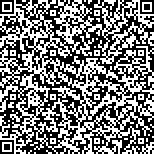下载中心
优秀审稿专家
优秀论文
相关链接
摘要

结合归一化火灾差异指数NDBR(normalized difference burn ratio)和MODIS多波段影像梯度边缘分析手段检测火线, 应用B样条函数拟合火线并确定火势蔓延方向。为对比验证, 基于火线的Kriging插值实现火灾外推预测, 与30min后的火灾参考数据目视对比与统计:火线的预测变化与参考影像基本保持一致, 火灾外推影像的均值和熵约为参考影像的86%和81%, 火迹地检测的Kappa系数达80.2%。试验表明, 提出的森林火线特征自动检测方法在动态火灾监测中是可行、有效的。
Remotely sensed infrared images are often used to assess forest fire conditions. Meanwhile, fire propagation models are in use to forecast future conditions. The traditional method of fire monitoring is mapping or extraction of burn scar and hotspot generally depending on abnormity character of spectral radiation and thermal infrared (TIR) channels. In the Dynamic Data-Driven Application System (DDDAS) concept, the fire propagation model will react to the image data, which should produce more accurate predictions of fire propagation. So the parameters of fire line and propagation direction extracted from the fire edge map are more important than burnt area estimation in real-time fire forecast application. The method capable of automatically determining the fire perimeter, active fire line, and fire direction is developed in this paper based on some image processing techniques. And MODIS (Moderate resolution Imaging Spectrometer) is used as experimental data because of its widely spectral range bands and dynamic monitoring capacity for the earth. First, the optimal bands choice construction for spectral indices of NDBR (Normalized Difference Burn Ratio) capable of describing active fire intensity is discussed. Then the multi-spectral image gradient together with TIR channels and solar reflectance channels is used to map the fire edge which can be put on NDBR image for restriction against active fire line. And B-spline model is applied to fit fire line segments to a spline curve for fire propagation front estimation by normal of the spline. At last, the kriging interpolation method based on hotspots with high gradient magnitude of fire line is used to extrapolate fire edge region to validate these results. The image of forest fires located in Great Xing’an Mountains is processed and another image after 30mins is used as the referenced image. Two aspects prove that propagation of fire line are essentially consistent with the referenced image. And expectation, entropy value of image context and kappa for spatial fire pixel identification can respectively reach 86%, 81%, 80.2% compared with the referenced one. So it is suggested by the results that this automatic process for extracting fire propagation parameters can be proved with well performance and efficient in dynamic fire mapping and monitoring.

